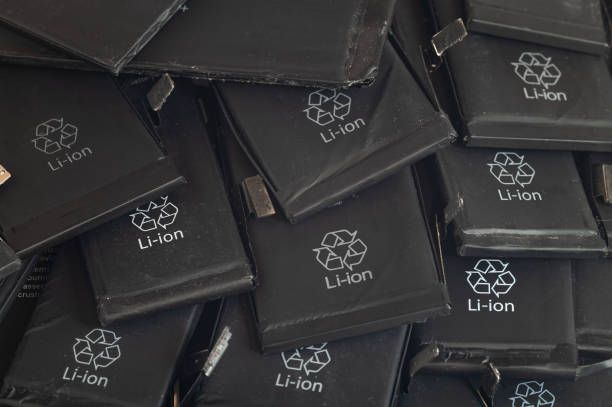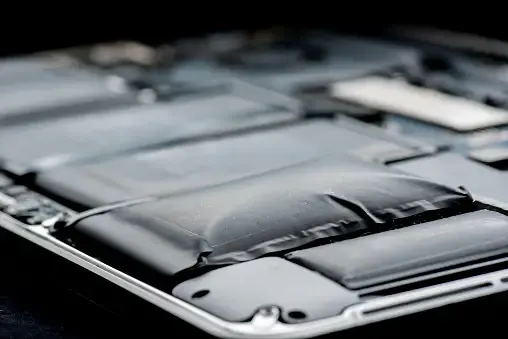
Get a Quote
What Should We Pay Attention to Regarding Lithium Batteries?
Avoid Extreme Conditions
Li-ion Battery Safety Tips
When it comes to Li-ion batteries, extreme conditions can spell disaster. It's crucial to avoid leaving these batteries in direct sunlight or hot environments. The reason? Excessive heat can lead to a phenomenon known as thermal runaway, where the battery generates more heat than it dissipates. This not only shortens the battery's lifespan but also poses a serious risk of fires or explosions.
Risks of Thermal Runaway
Thermal runaway is a pressing concern for Li-ion batteries. As temperatures rise beyond the battery's tolerance, it sets off a chain reaction of escalating heat generation, potentially culminating in catastrophic outcomes.
Importance of Moderate Temperatures
To mitigate these risks, storing Li-ion batteries in moderate temperatures, ideally around 15°C, is imperative. This practice not only safeguards the battery's integrity but also ensures a longer lifespan and optimal performance.
Proper Disposal of Old Batteries
Recycling Li-ion Batteries
As Li-ion batteries age, they pose increasing hazards to both the environment and safety. The accumulation of age-related wear and tear can compromise their integrity, leading to potential risks. Proper disposal of old or aged Li-ion batteries is paramount to mitigate these dangers.
Hazards of Using Old Batteries
Old or aged Li-ion batteries are prone to deterioration, increasing the likelihood of malfunctions such as overheating or swelling. These issues not only affect the battery's performance but also pose serious safety concerns, including the risk of fires or explosions.
Implementing Inspection and Disposal Systems
To address these risks effectively, it's essential to establish robust inspection and disposal systems within your organization. Regular inspections can help identify aged batteries that require disposal, ensuring they are safely removed from circulation before causing harm.
Promoting Environmentally-Friendly Recycling
We advocate for environmentally-friendly recycling options for Li-ion batteries. By recycling old batteries, you not only prevent harmful substances from entering the environment but also contribute to the conservation of valuable resources.
Regular Maintenance and Usage
Li-ion Battery Lifespan
Maximizing the lifespan of Li-ion batteries requires diligent maintenance and usage practices. Regular charging and discharging cycles play a crucial role in preserving battery health and ensuring optimal performance over time.
Importance of Routine Inspections
Storing batteries for extended periods without usage can lead to capacity loss and diminished efficiency. Implementing routine inspections allows for early detection of issues such as swelling or deterioration, enabling timely intervention to prevent further damage. By adhering to recommended guidelines for storage, charging, and usage, you can extend the lifespan of your Li-ion batteries and optimize their performance.
Immediate Action for Swollen Batteries
Swollen Li-ion Battery Dangers
The sight of a swollen Li-ion battery should prompt immediate action due to the associated dangers. Swelling is often indicative of internal issues such as gas buildup or electrolyte leakage, which can escalate into more severe problems if left unaddressed.
Urgency of Safe Disposal
Safely disposing of swollen batteries is crucial to prevent potential hazards such as fires or chemical leaks. Prompt action is essential to minimize the risk of accidents and protect both personnel and property from harm.
Handling Precautions
When dealing with swollen batteries, it's essential to exercise caution and follow expert advice. Avoid puncturing or mishandling the battery, as this can exacerbate the risk of accidents. Instead, rely on trained professionals or specialized disposal services to ensure safe and responsible handling.
Use of Compatible Chargers
Suitable Li-ion Battery Chargers
Choosing the right charger is essential for the safety and longevity of Li-ion batteries. Opt for chargers recommended by the battery manufacturer to ensure compatibility and adherence to safety standards. While cheaper alternatives may seem tempting, they often lack necessary safety features, posing risks of overcharging or damage to the batteries.
Inspection and Disposal of Old Chargers
Regularly inspect chargers for signs of damage or wear, such as frayed cables or loose connections. Damaged chargers should be disposed of responsibly to prevent potential hazards. Recycling programs are available for electronic waste, including old or unusable chargers, promoting environmental sustainability while reducing risks associated with faulty equipment.
Precautions During Charging
Don't Charge Damaged Li-ion Batteries
Charging damaged or compromised Li-ion batteries can exacerbate existing issues, increasing the risk of accidents such as fires or explosions. As part of a comprehensive battery management plan, always inspect batteries before charging to ensure they are in good condition. Purpose-built battery cabinets provide added safety measures during charging, including ventilation and temperature regulation, minimizing risks associated with charging operations.
Ensuring Safe Charging Conditions
Creating a safe charging environment is paramount to prevent accidents and protect personnel and property. Implementing safety protocols, such as regular inspections and adherence to manufacturer guidelines, ensures that charging processes remain efficient and hazard-free. By prioritizing safety during charging, organizations can maintain the integrity and performance of Li-ion batteries while minimizing associated risks.
Fire and Heat Protection Measures
Lithium-ion Battery Fire Prevention
Understanding the risks associated with workplace fires involving Li-ion batteries is crucial for maintaining safety. Li-ion batteries are sensitive to extreme heat, which can lead to thermal runaway and the rapid escalation of fires. Implementing effective fire prevention measures is essential to mitigate these risks and safeguard personnel and property.
Importance of Heat and Fire Barriers
Creating heat and fire barriers in battery storage areas is a proactive step towards preventing fire-related incidents. These barriers help contain potential fires and limit their spread, providing valuable time for emergency response and evacuation procedures. By investing in robust fire protection infrastructure, organizations can minimize the impact of battery-related fires and ensure the safety of their premises.
Emergency Evacuation Procedures
In the event of a fire involving Li-ion batteries, prompt evacuation is paramount to ensure the safety of all individuals on-site. Establishing clear emergency evacuation procedures and conducting regular drills helps prepare personnel for swift and orderly evacuations. Additionally, equipping facilities with appropriate fire extinguishing equipment enhances response capabilities, enabling personnel to mitigate small fires before they escalate.
Monitoring Battery Charge Time
Battery Charging Time Indicators
Monitoring battery charge times is essential for identifying potential issues and ensuring the efficient operation of Li-ion batteries. Longer charging times can indicate underlying problems such as battery degradation or charger malfunction. By paying attention to charging durations and recognizing deviations from normal patterns, organizations can proactively address issues before they escalate.
Importance of Disposing of Old Batteries
Disposing of old or faulty batteries is critical for reducing risks associated with Li-ion battery usage. Old batteries are more prone to malfunctions and pose a higher risk of overheating or swelling during charging. Implementing proper disposal procedures helps mitigate these risks and ensures the safe and responsible handling of end-of-life batteries.
Strategies for Effective Monitoring
Implementing strategies for monitoring and managing battery charge times effectively enhances safety and efficiency. This may include utilizing battery management systems that provide real-time monitoring of charging processes and battery performance. By leveraging technology and implementing best practices, organizations can optimize battery usage and minimize risks associated with Li-ion battery charging.
Conclusion
Ensuring the safe handling and management of Li-ion batteries is essential to minimize risks and maximize performance. By adhering to best practices outlined in this guide, organizations can mitigate potential hazards and maintain the integrity of their battery systems.
We encourage you to explore the safer, smarter, and simpler lithium batteries offered by EverExceed to reduce the risks associated with the use of lithium-ion batteries. And we will provide you with more valuable information to help you create a safer battery operating environment.


